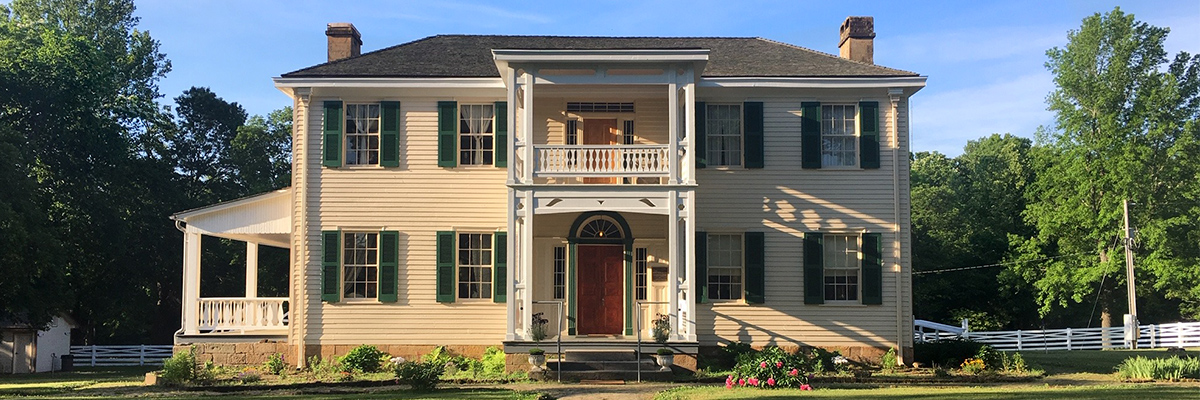
Hunter’s Home
Hunter’s Home
19479 East Murrell Home Road
Park Hill, OK 74451-2001
918-456-2751
huntershome@history.ok.gov
Director: Sue Teska
Historical Interpreters:
Carly Johnson
Alaina Spencer
Jody Stamper
Hours
Tuesday through Saturday
9 a.m. to 4:30 p.m.
| Adults | $7 |
| Seniors (62+) | $5 |
| Students (6–18) | $4 |
| Family (up to 6 people) | $18 |
| Group Rate (10+) | $5/person |
| OHS Members, Children (under 6), Veterans and Active Military (with ID) | Free |



Hunter’s Home is the only remaining pre–Civil War plantation home in Oklahoma. A kitchen garden, field crops, animals, log cabin, and the historic home give visitors a window into life on an antebellum Cherokee plantation.
Visitors can experience living history interpreters demonstrating nineteenth-century trades, chores, cooking, gardening, and crafts. Living history activities are 10 a.m. to 4 p.m.
The home is a National Historic Landmark, listed on the National Register of Historic Places, and part of the Trail of Tears National Historic Trail.
Pets and Service Animals
For the protection of your pets and the animals living on site, pets are not permitted on site. Service animals that are individually trained to do work or perform tasks for people with disabilities are welcome.
History
George Michael Murrell was born to a prominent family in Lynchburg, Virginia, in 1808. He moved to the Athens, Tennessee, area as a young man to pursue mercantile interests with his brother, Onslow Glenmore Murrell, and future father-in-law, Lewis Ross. There, in 1834, George Murrell met and married Minerva Ross. Minerva was the oldest daughter of Lewis and Fannie (Holt) Ross, members of a wealthy and influential Cherokee family. Lewis was a merchant, planter, and national treasurer of the Cherokee Nation. His brother, John, was principal chief of the Cherokee Nation from 1828 until his death in 1866.
When the Cherokees were forced to leave their homes during the Trail of Tears 1838–39, Murrell chose to move with his wife’s family to the new Nation in the West. In Park Hill, Indian Territory, he established a plantation and built a large frame home similar to those he remembered in Virginia. He called the Greek Revival-style house Hunter’s Home because of his fondness for the fox hunt. A rock building was added beside the creek branch over a cold spring to preserve food. Outbuildings included a barn with stables for his horses. Other buildings probably added were a smokehouse, grist mill, blacksmith shop, corn cribs, and small cabins for enslaved persons and employees. Murrell and his father-in-law also established a mercantile business in Park Hill, later moving it into Tahlequah, the capital of the Cherokee Nation.

Operating support is generously provided by the Cherokee Nation.
Explore More
Hunter’s Home history
Root Hog or Die, the Hunter’s Home blog (archive)
“Seeds of History,” Crossroads

